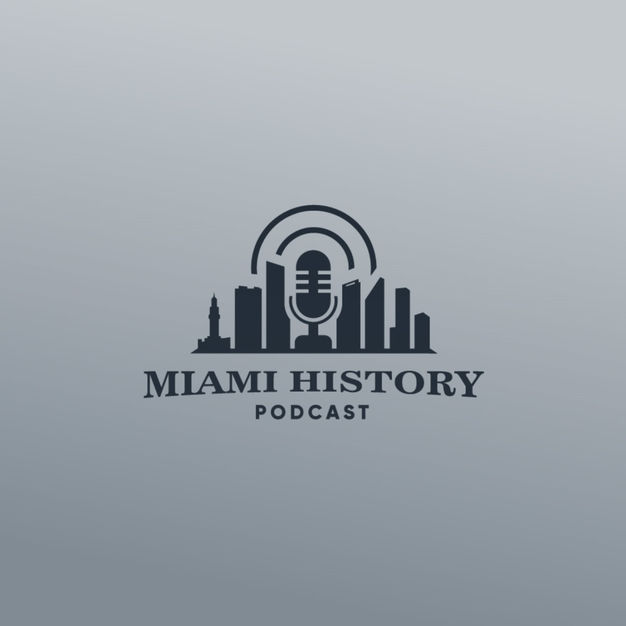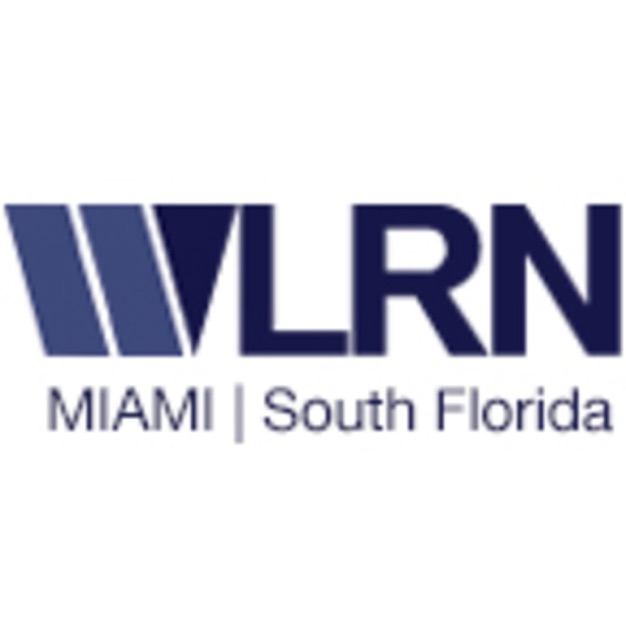
Miami History Podcast
Casey M. Piket
The Miami History Podcast will cover topics on the people, places and events that have shaped Miami's 120+ year history as a city. The hosts are Miami historian Dr. Paul S. George and history blogger Casey Piket.
- 33 minutes 45 secondsHistory Dade County Seats
This podcast episode features the inception and the history of Dade County and its many different county seats. Originally slated to be named Pinckney County, the municipality was named for Major Francis Dade who lost his life in a battle with the Seminole Indians in December of 1835. The county was formed in January of 1836 and was named to honor the fallen West Point graduate. The original county seat was placed in Indian Key and was there from 1836 until 1844.
It was moved to the banks of the Miami River, then referred to as Biscayne Bay Country, when William English used his influence to initiate a special election in 1844 to change the county seat. By 1888, the northern part of the county, which included what is now Palm Beach and Broward County, became more densely populated and triggered another special election to move the county seat to Juno. A decade later, in 1899, a third special election was initiated to move the county seat back to the new City of Miami, founded in 1896, which had become the largest city in the county by that time.
26 March 2024, 12:40 pm - 27 minutes 53 secondsFederal Buildings in Downtown Miami
This podcast episode features the buildings that served as the federal courthouse and post office in Miami from 1915 through the present day. The first courthouse was designed by Oscar Wenderoth in the early 1910s and opened at 100 NE First Avenue in downtown Miami. This building provided for all federal agencies including the courthouse, post office, and weather bureau from its opening until the peak of the Great Depression in 1933.
When the city’s federal business outgrew the original building, a new federal courthouse and post office building was constructed beginning in 1932 on the site of Miami’s first school building known as the Miami Central Grammar School which opened on that site in the early 1900s. This edifice was designed by the architectural firm of Paist and Steward and opened two blocks north of the first building at 300 NE First Avenue in 1933. The second federal building was in use as a federal building from its opening until it was replaced in 2008 by today’s Wilkie D Ferguson Jr. building at 400 North Miami Avenue.
28 November 2023, 1:02 pm - 40 minutes 1 secondHistory of Port of Miami
This podcast episode discusses the early history of the Port of Miami. From the first channel dredged by Henry Flagler in 1897 to the move of the port to the Dodge Islands, the overriding theme throughout the history of this most important institution was “Watch the Port of Miami”. What began with the start of steamship service from Royal Palm Docks to transport tourists from Miami to Key West, grew into one of the largest port operations in the nation by the 1930s.
When the port moved from the mouth of the Miami River to today’s Maurice Ferre Park (aka Bicentennial Park), it was not well received by many of Miami’s civic leaders. The fear was that the beauty of the shoreline along the bay would be overtaken by the industrial operations of the port. From the onset, city leaders had a plan to move the port from the shoreline to somewhere else. Finally, beginning in the late-1950s, the Metro Dade County government partnered with the City of Miami to bulkhead and connect the chain of Dodge Islands to create one of the busiest ports in the world.
Tune into this week’s podcast episode to hear more about the Port of Miami. You can access this episode on your favorite podcast platform (iTunes, Stitcher, Soundcloud, Spotify), or listen directly on the Miami-History website. Please remember to click on the subscribe button and to provide a rating and comment on any of the aforementioned platforms.
18 July 2023, 10:08 pm - 1 hour 1 minuteStatesman Tourists in Miami (1920 - 1946)
This podcast episode features the stories of presidents and world leaders who visited Miami from 1920 – 1946. By the start of the second decade of the Twentieth Century, newly elected presidents began traveling to Miami as part of their pre-inauguration vacation to relax, fish and prepare for their presidential term. This was the case for Warren G. Harding in 1921, Herbert Hoover in 1929, and Franklin Delano Roosevelt in 1933.
In addition, as Miami grew over the course of the first few decades of the last century, visiting the metropolitan area became politically advantageous for sitting presidents. In January of 1928, Calvin Coolidge made a brief stop in Miami for a parade through downtown to allow local residents to see their president while he was enroute to Havana, Cuba, for a Pan-American conference.
However, it was not just American presidents who enjoyed visiting the Magic City. In the winter of 1946, coming off a loss for his bid for reelection as Prime Minister of England, Winston Churchill spent January and February in Miami for rest and relaxation. While his trip may be most be remembered for the commencement ceremony at Roddy Burdine Stadium where he received an honorary doctorate from the University of Miami, he also made time to visit the Hialeah Race Track, Parrott Jungle, and the Surf Club where he painted an ocean vista from his cabana on the beach.
26 February 2023, 5:44 pm - 29 minutes 53 secondsHistory of Dade County Courthouses in Miami
This podcast episode features the different Dade County courthouses that were located in the City of Miami from the formation of the county. Dade County was created in 1836 and the county seat resided in Indian Key, along the banks of the Miami River, and in Juno, until a county-wide vote placed it in the City of Miami in 1899.
The first county courthouse in Miami was located in a two-story building on the east side of Avenue D, the future South Miami Avenue, from 1899 until 1904. The first courthouse located on Twelfth Street, the future Flagler Street, opened in 1904 and was expected to accommodate the county’s business for fifty years. However, the growth of the county required a larger courthouse by the mid-1920s. Today’s Dade County courthouse was opened on September 6, 1928, but will soon be replaced by a new structure being constructed just west of the current building.
30 January 2023, 3:11 am - 1 hour 24 minutes50th Anniversary of Perfection in 1972
The year 1972 was a special year for the Miami metropolitan area. It was an election year when South Florida hosted the political conventions of both major parties, when the sitting president made Key Biscayne famous as the winter White House, and when Dade County approved a $553 million “Decade of Progress” bond issue to fund projects that would upgrade the county’s infrastructure and cultural institutions. It was also the year of the “perfect season” for the Miami Dolphins.
Tune into this week’s podcast episode to hear about the early history of the Miami Dolphins and that magical season in 1972. Perfection, or going undefeated and untied for an entire season through the championship game, is a feat that had never been accomplished before or since the Miami Dolphins of 1972.
28 December 2022, 8:20 pm - 21 minutes 15 secondsHistory of the Village of Miami Shores
This podcast episode features the story of one of South Florida’s prominent municipalities on the northeastern section of Dade County. What was once part of an area referred to generically as ‘Biscayne Country’, it became America’s Mediterranean when the Shoreland Company purchased and platted the future Village of Miami Shores.
The development of Miami Shores began to market property during the peak of the 1920s building boom and set records for lot sales in a single day. However, the Shoreland company took on too much debt and had to file for bankruptcy after the boom abruptly ended in 1926. Miami Shores was completed after new investors took over the project, and the area incorporated as the Village of Miami Shores on January 2, 1932.
23 November 2022, 12:23 am - 30 minutes 11 secondsMiami - Civil War to Incorporation (1861 – 1896)
This podcast episode features Miami from the onset of the Civil War to the dawn of incorporation in 1896. While it was a sparsely populated wilderness, the former Fort Dallas, or future City of Miami, was subject to a Union blockade during the Civil War years. During the reconstruction period, the Freedman’s Bureau dispatched William Gleason to assess the viability of the region for a place to settle freed slaves. This began a period of chaos between the established settlers and Gleason’s ambitions from 1866 through 1877.
During the decades of the 1870s and 1880s, many of Miami’s earliest pioneers arrived and settled into an area simply referred to as Biscayne. Some still referred to the region as Fort Dallas, and a few remembered the Village of Miami period, but most of the settlers during this time were looking to enjoy the pristine and tranquil setting that Southeast Florida offered during the two decades preceding incorporation. Once Henry Flagler, Julia Tuttle, and the Brickells reached their respective agreements to form a city, the area changed dramatically.
23 August 2022, 12:43 am - 36 minutes 11 secondsHistory of Fort Dallas
This podcast episode features the story of the Fort Dallas era of Miami. While there were several fortifications during the conflicts with the Seminole tribe during the mid-1800s, the area took on the name Fort Dallas for years following the army’s abandonment of the fort that once resided in today’s downtown Miami. Fort Dallas was originally built on Richard Fitzpatrick’s homesite during the Second Seminole War, and then later was refortified on the same property, then owned by Fitzpatrick’s nephew William English, during the Third Seminole War.
Once the Seminole Wars had concluded, the remaining buildings were occupied by the Biscayne Bay Company who later sold most of the property to Julia Tuttle in 1891. The barracks, or “slave plantation quarters”, was once Dade County’s seat, and also would serve as a courthouse prior to the incorporation of the City of Miami. Fort Dallas provided the base of what would become the business district of the Magic City during its early years.
Website: www.miami-history.com
14 August 2022, 6:08 pm - 41 minutes 48 secondsDade Heritage Trust Turns 50
On the 50th anniversary of the formation of the Dade Heritage Trust (DHT), the Miami History Podcast welcomes Christine Rupp, director of the organization to discuss the institution’s mission, accomplishments, and future. DHT was founded to provide advocacy for historic preservation around Miami-Dade County. It was organized in 1972 by a group of women who saw the need for a county-wide organization to protect historic buildings and resources throughout the municipality.
Website: www.miamihistory.com
Sponsor: https://miami-history.com/sponsors/bbq-and-craft-company-brickell
20 June 2022, 11:02 pm - 34 minutes 26 secondsDowntown Miami Railroad Stations
This podcast episode discusses the locations, stories, and impact of the FEC downtown railroad stations over the course of the City of Miami’s first 125 years of history. From the first temporary train station constructed in 1896, lasting only one year, to the long-time wood frame station near the county courthouse, the FEC railroad stations have always been important institutions during downtown Miami’s storied history.
www.miami-history.com
14 June 2022, 11:24 pm - More Episodes? Get the App
Your feedback is valuable to us. Should you encounter any bugs, glitches, lack of functionality or other problems, please email us on [email protected] or join Moon.FM Telegram Group where you can talk directly to the dev team who are happy to answer any queries.
 Miami Hustle Series
Miami Hustle Series
 Miami Herald
Miami Herald
 Story of Miami
Story of Miami
 The Florida Roundup | WLRN
The Florida Roundup | WLRN
 Planted in Miami
Planted in Miami